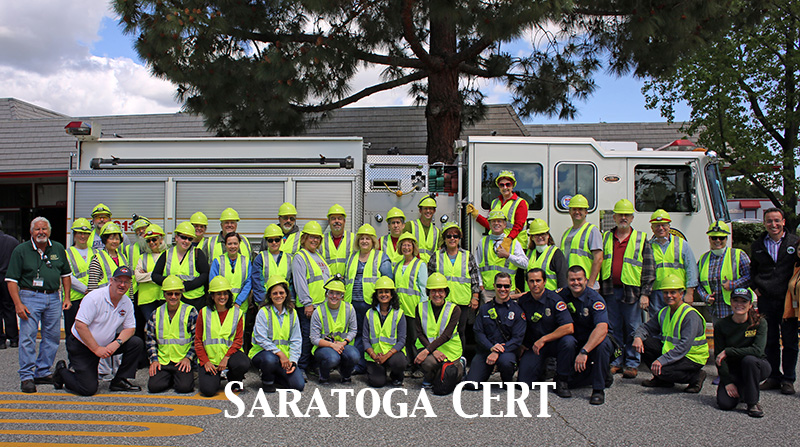Initial organization
With a significant event occurring at random, we don’t know who will be available to assist or who might be available at any rally point. Some of the ‘old-timers’, leaders, or more experienced folks may not be able to assist. That being said, any assembly of CERT personnel needs to have the initial few people who show up start to form a working group.
The way I see it, when the first person arrives, he or she should begin and assume a role of Incident Commander. They should grab a piece of paper (or, more effectively, an ICS-211 form) and log themselves in. As subsequent personnel show up, they can also sign in. The Incident Commander can transfer duties to any more qualified individual if they like as members arrive. The Incident Commander can also ask for someone to be a scribe and to manage the sign-in sheet.
Next, a backpack checklist can be reviewed to ensure that all members have the necessary supplies and Personal Protective Equipment. Any member that is missing something can be assigned roles that do not require that equipment. For instance, someone missing work gloves or hard hat might be ineligible to perform Search and Rescue, however, they might be equipped enough to perform a role within medical operations.
Critical Mass
While members are being signed-in, one question should be to enquire if anyone has their amateur radio license and has communications with the EOC. If so, that person can be our communications person until such time that an embedded Amateur Radio Operator is sent to our rally point.
When the number of members present is sufficient, it might be a nice time to ask someone to take on the following roles:
Planning Section Chief
This role should review the sign-in sheet and see if members have identified any special skills, desires, or even restrictions. Then, they can sit tight until the IOC identifies an incident that needs attention.
Logistics Section Chief
This role should see if an amateur radio operator is available. If so, a query should go out to the EOC asking if the city’s caches have been activated and are staffed. Knowing where possible equipment and supplies are and lead times would be important to assist when teams are dispatched.
This role should immediately call to the EOC for a number of FRS radios, an ICS bag, and a few Triage ‘Go’ boxes.
Summary
In summary, you cannot count on any Incident Command skilled personnel being present at the start of an event. It is incumbent on each of you to have a few blank forms or, at minimum a pad of paper and some pens or pencils. Having a standard backpack checklist and reviewing it to ensure you are always prepared is also a very good practice.
We want our members to feel they have the skills necessary to assume any role that comes up. With our current Saratoga CERT organization, we may not have the necessary Division Leaders or starter supplies available at the start of any real event. That is the reason for this article. It is necessary to self-assemble and to build out an effective Incident Command Post starting with the first member arriving at any rally point.
I also hope the following simple scenarios might help stimulate your thinking. Ensuring that all allocation of resources comes from the EOC is important. Ensuring that effective two-way communications with the EOC is just as important. Finally, being responsible for the members present at a rally point is paramount. Knowing who they are, what skills they bring, to what activity they have been deployed to, and their safety and welfare are important. To that end, some level of paperwork is necessary to know who is present, where they are, and what activity they have been deployed to.
Think through the following scenarios to see what you might do in any of the following situations. The questions on each scenario are not exhaustive. They are just there to stimulate some thinking.
Scenario 1
You have assumed the Incident Command role at a rally point. Someone comes in and lets you know of a neighboring house that might be structurally unstable and there might, possibly be someone inside.
- Do you head over?
- Do you collect details and ask the EOC for guidance?
- Do you log it on a neighborhood survey?
Scenario 2
You have assumed the Incident Command role at a rally point. You have 6 people ready for assignment. The EOC asks that once you have 4 members available, send them to pick a dumpster off a crash test dummy (sound familiar?). Then, the EOC needs another 4 members to setup a triage site in front of the neighboring elementary school.
- Do you send 4 to save the crash test dummy?
- Do you just say no to the triage site?
- Do you ask the EOC for clarity on assignment priority as you do not have enough resources?
- Do you ever send just one member on an assignment?
Scenario 3
You are readying your members as they are assembling. You ask the EOC if you can get starter supplies. Either there is no reply from the EOC or there is no logistic team available to assist.
- Do you operate without any supplies?
- Do you send two members over to a cache and try to break-in?
- Do you ask if anyone on the Amateur Radio net has access to the storage caches or has the combinations?
- Once you find you can gain access, do you send one or two members over to get the necessary supplies?
For further reading, please checkout:
ICS Overview (FEMA) https://training.fema.gov/emiweb/is/is100b/visuals/pdf/02ics100b_visuals_october2013.pdf
ICS Training (FEMA)
https://training.fema.gov/emiweb/is/icsresource/assets/reviewmaterials.pdf
CERT Organization
